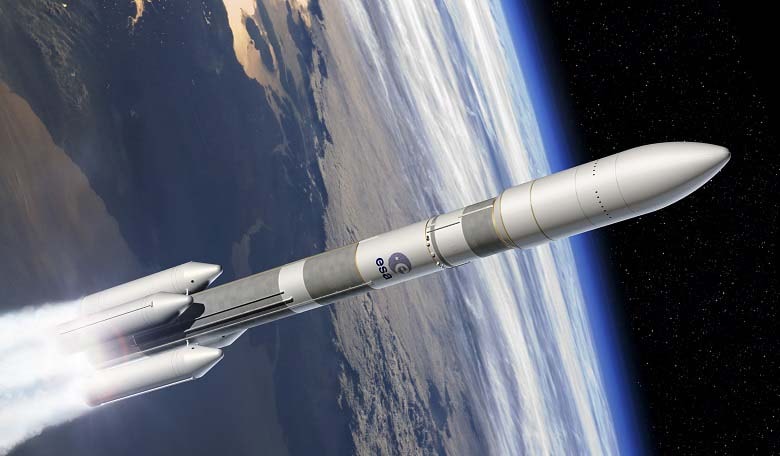In a press briefing at Airbus Safran Launchers' production site, ASL Chief Executive Alain Charmeau said that he expected the transfer of cash from Safran to Airbus to happen before the end of April. Although the Ariane 6 has run into a few problems, including delays in the ramp-up of ASL (Ariane 6 prime contractor), it is still expected to be ready for first flight by 2020.
Airbus and Safran had agreed that Safran would pay Airbus 800 million euros ($874 million) in cash, in addition to its rocket-engine manufacturing capability, to become a 50-50 ASL shareholder with Airbus.
Since the beginning of 2016, Airbus officials have been working with French tax authorities on minimizing the tax on the cash transfer, which could amount to over 60% of the transaction.
Delays in the transfer have amounted to practical difficulties for the ASL – although it expected to involve 8000 employees, it has so far been operating with only 400. The delay has also made it difficult for ASL to present a fixed-price Ariane 6 production proposal to the 22-nation European Space Agency, which is financing the majority of Ariane 6 development.
Charmeau and other officials attending the briefing said there has been positive movement on the tax issue in recent days and that a late-April conclusion appeared possible. Once that conclusion is reached, ASL will provide its Ariane 6 cost proposal, called “fixed price with variations” by Charmeau – by the end of April. Negotiations on the details will follow, after which ESA will conduct a scheduled Program Implementation Review.
“We will agree with ESA on an escalation formula [in contract pricing] in order to update the prices according to certain criteria between now and the end of the development phase,” Charmeau said. “It’s an inflation computation.”
The Ariane 64 carries four strap-on boosters and can place satellites weighing a combined 10,500 kilograms into orbit.
Patrick Bonguet, Ariane 6 program head at ASL, said Ariane 6 is planning to reduce per-kilogram launch prices by 40-50 percent compared to today’s Ariane 5.
“Ariane 6 will have twice the mass and twice the volume of the Falcon 9, at less than twice the price,” Bonguet said.
SpaceX’s Falcon 9 Upgrade recently demonstrated its ability to carry a 5,300-kilogram telecommunications satellite to geostationary transfer orbit by stretching its capacity to the limit.
Bonguet was referring to a fully loaded Ariane 6, with 10,500 kilograms of satellite payload, and comparing that launch’s price to today’s Falcon 9, which typically carries just one geostationary-orbit satellite per launch.











